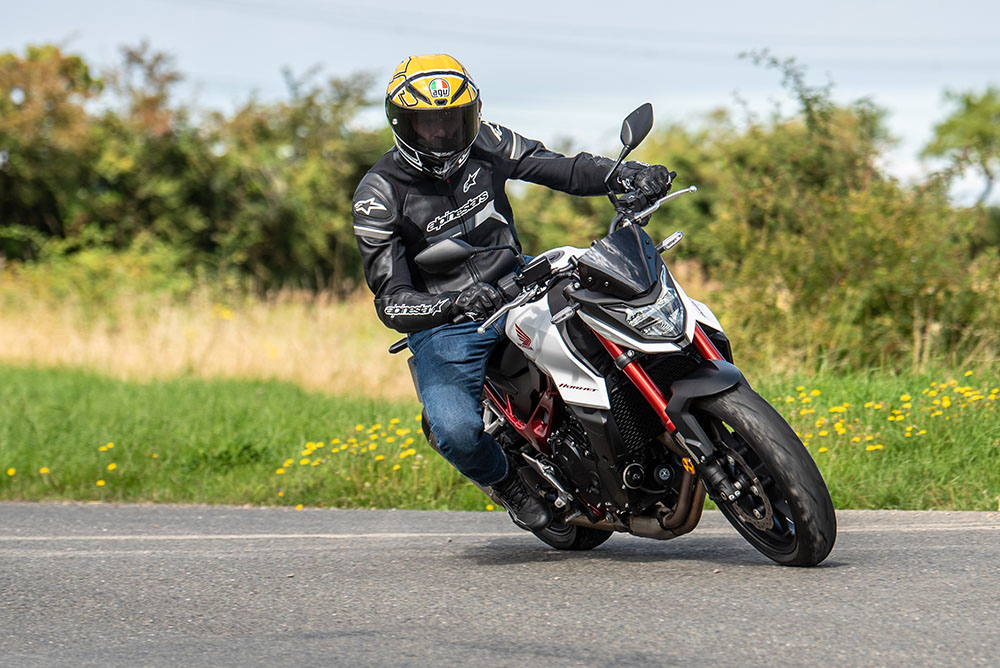Who doesn’t remember the original Honda Hornet? Launched back in 1998, it combined sharp naked looks, responsive handling and enough performance from the smooth, 599cc, inline four to make it a popular first full-sized motorbike.
The Hornet was typical of the middleweight naked of the time: an affordable roadster utilising a detuned version of a previous generation supersport motor, wrapped up in a basic frame and fitted out with budget cycle parts to keep the price down. The CB600F, to give the Hornet its official designation, used a modified version of the venerable CBR600 motor. It delivered just under 100bhp and, like the Suzuki Bandit and Yamaha Fazer, was a very common sight on British roads at the turn of the century.
The Hornet of old enjoyed a 15 year stint and gained countless fans, spawning a FireBlade engined 900cc version along the way too – although the 600 was always the punters’ favourite. As the market changed and 600s fell out of favour, we thought the Hornet name was consigned to history. That was until late 2022, when Honda pulled the covers off this new CB750 Hornet at the Cologne motorcycle show. With a £6999 launch price and a higher specification than the class defining Yamaha MT-07, Honda’s first entry into the two-cylinder modern middleweight class has been eagerly anticipated.
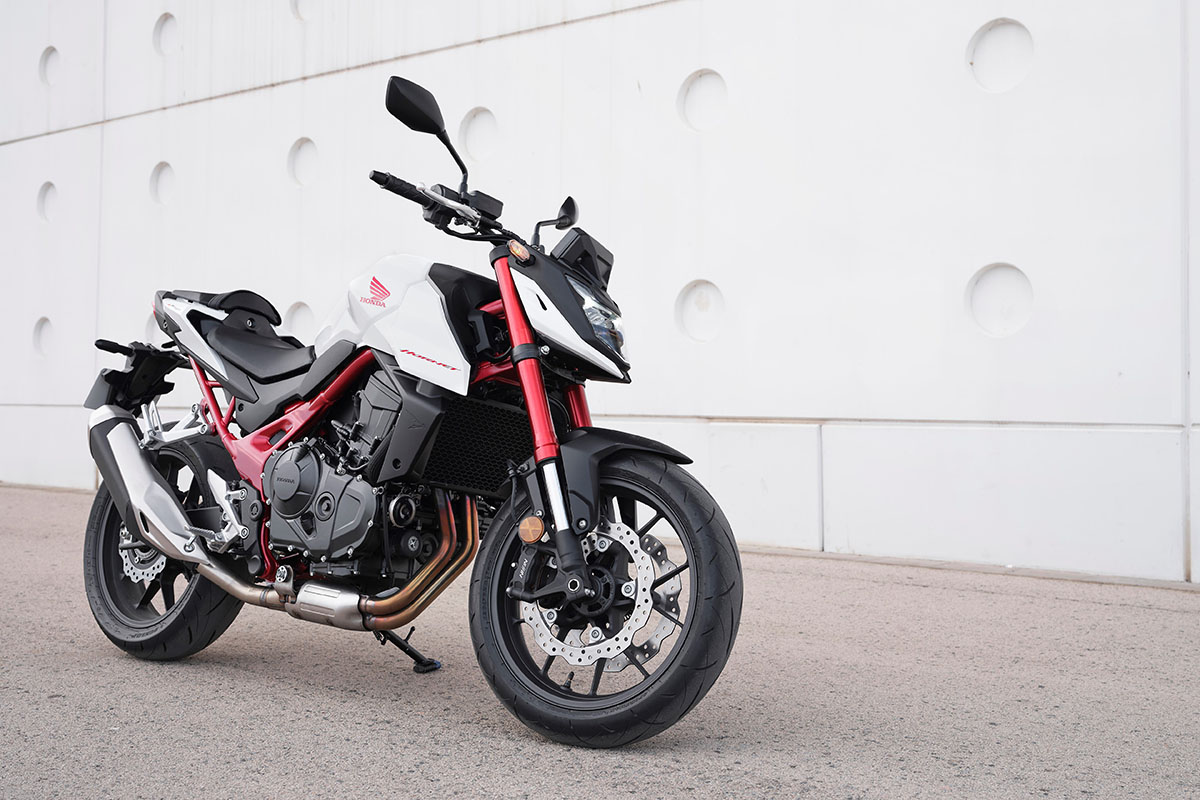
Engine
It’s out with the traditional inline-four for the latest Hornet and in with the on trend parallel twin. Far from being a model built from parts handed down from other models in the range, the 2023 iteration is a ground up new design. The ride-by-wire controlled 755cc twin pumps out a punchy 91bhp and 74nm of torque. It’s shared with the equally new XLV750 Transalp adventure bike (which was announced a few weeks after the Hornet) and is good for a claimed top speed of 130mph. And what a joy it is!
Riding the CB750 Hornet on a range of roads during our test, from national speed limit dual carriageways to twisty B-roads, its versatility shone through with it feeling at home and capable in a variety of scenarios.
Although more than capable of stints on the motorway, the Hornet excelled when on the twisties, with the revvy parallel twin goading you into riding spiritedly, always putting a big smile on your face. And that’s what motorcycling is all about, right?
We could have spent the entire day riding our favourite country roads, but in the interests of finding out what the Hornet would be like to live with, we threw in some longer dual carriageway work and slower town riding, too, to mimic a typical commute. If your ride to work involves sitting at 70mph for a period of time or navigating heavy town traffic, the Hornet won’t have any problems whatsoever, and its smooth character meant it was a doddle to ride while doing so. It’s a very easy motorcycle to ride, but with more than enough performance to deliver a real buzz (sorry!) when required.
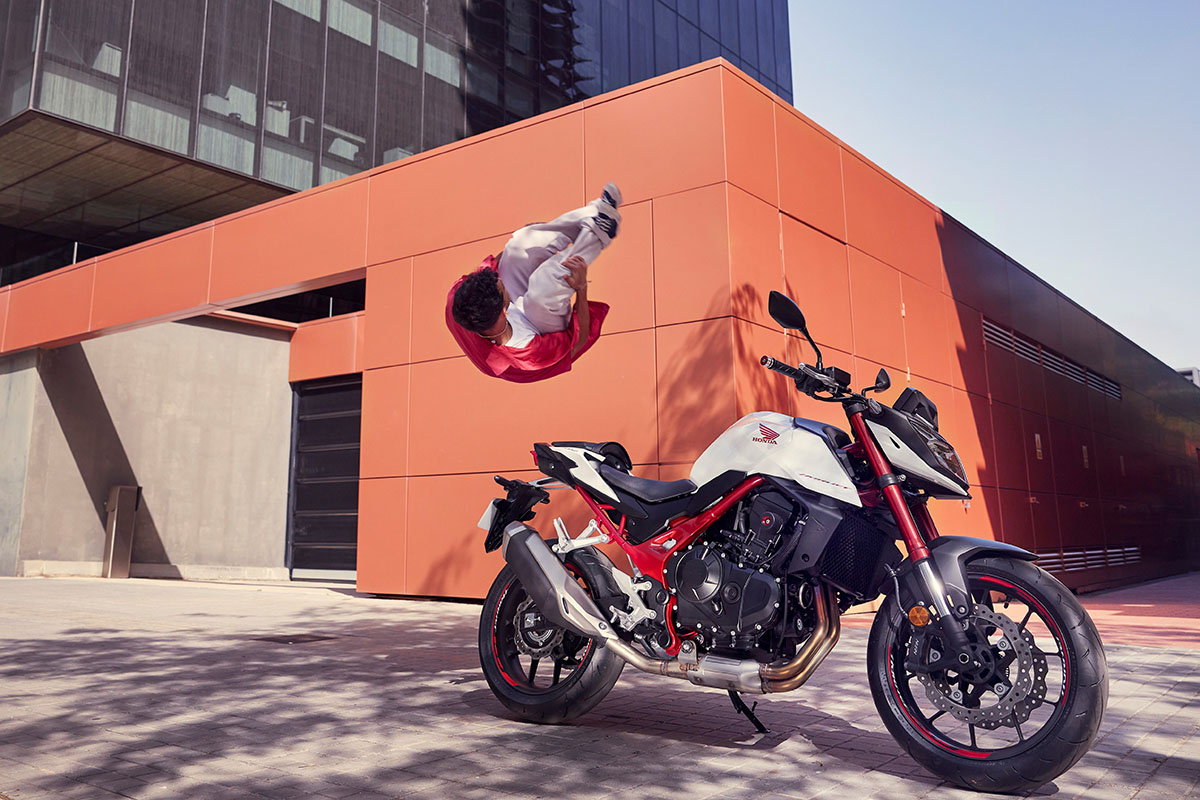
Chassis and ride quality
The Hornet’s new motor is also housed in a new tubular steel diamond frame, with non-adjustable Showa 41mm upside down forks and a rear shock which can be manually adjusted for preload. The lack of adjustment might put some more experienced riders off, but for most regular riders, just being able to open the garage door, jump on and go for a ride without the temptation of getting the tools out to find that perfect suspension set up has its appeal. Being a little critical, heavier riders might find the rear a little soft, but Honda know how to set a bike up and, for most of the people most of the time, there really is no reason to complain.
The 795mm seat height is around the norm for the class too, with its relatively low weight and narrow waistline making it accessible to a wide range of riders. Weighing in at 190kg, its light and flickable turning impressed most, requiring minimal effort to carve through corners and city streets alike. Straight out the crate, the Hornet’s set up works well for a broad range of riding, too, feeling well balanced. It’s predictable, stable and planted enough through corners, although slightly twitchy on quick changes of direction, and stability at motorway speeds was good. Overall, at the average pace we were riding at, there were no red flags to report.
Navigating bumpy surfaces also didn’t cause the Hornet any issues either, managing pot holes and rough tarmac without protesting or upsetting the bike.
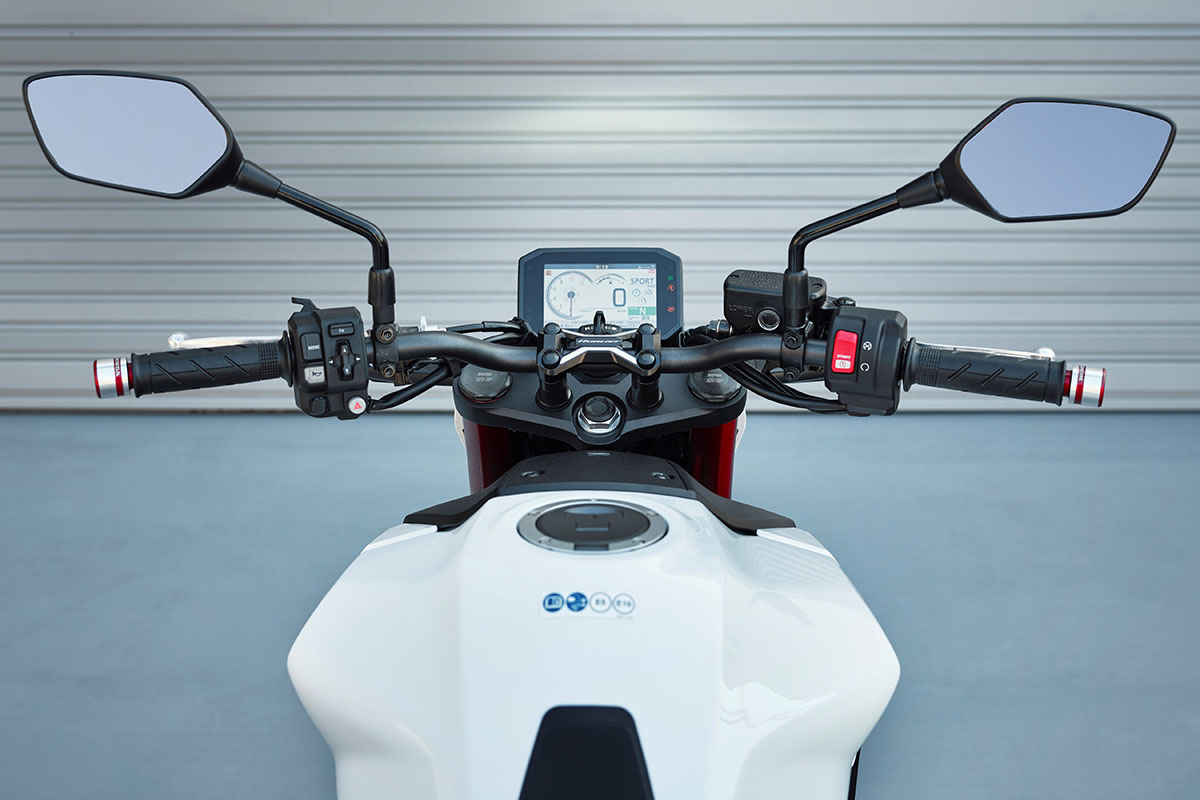
Technology and equipment
As you’d expect from Honda, build quality impresses despite the low price tag, and the Japanese firm haven’t scrimped on equipment and options, either.
There are three standard riding modes – Sport, Standard and Rain – as well as ‘User’ mode, which lets riders set up their own custom mapping, choosing from a menu of three power and torque control settings, as well as engine braking.
The 5” TFT display is packed full of information. It looks a little cluttered, but that’s being super picky. It’s intuitive enough and has four different layouts to choose from. You can also connect your phone to control music, calls and sat nav, and you also get a USB charger, LED lights all-round, self-cancelling indicators and Nissin front radial brakes, which deliver adequate stopping power.
There are four colour options available for the CB750. A quick poll around our office suggests the red frame and forks of the white and black liveries splits opinion, but if its not your cup of tea you’ll find a black frame and silver fork stanctions on the yellow and grey options.
We rode the Hornet with the optional £555 Sports Pack fitted which includes an up/down quickshifter, seat cowl, sportier footpegs, and fly screen, which were all welcome additions and good value upgrades.
Other upgrade packs are available for the Hornet, too, including the £410 Style Pack which features frame protectors, tank pad, aluminium handlebar riser clamp, bar end weights and wheel rim tape. And if you’re wanting to do longer rides or a bit of touring on the Hornet, the £765 Touring Pack comes with a three-litre tank bag, tail pack and hard panniers.
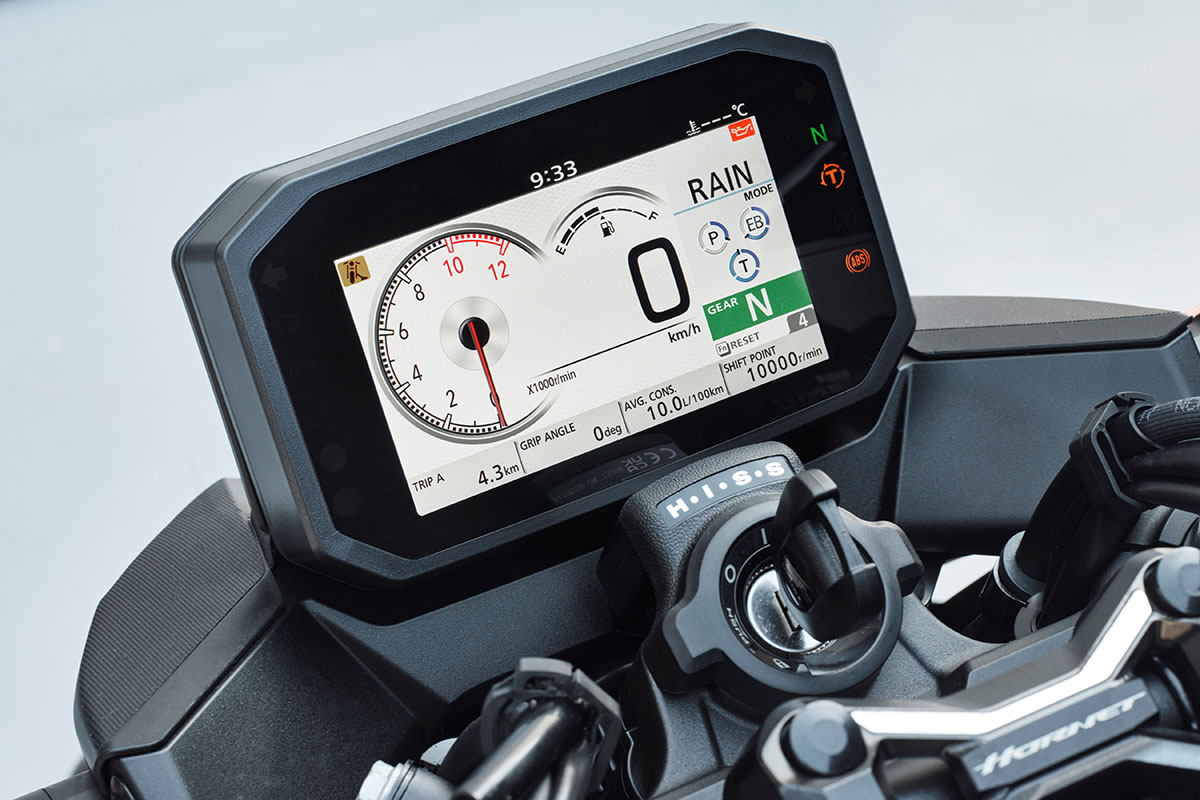
Competition
The middleweight naked category is full to the rafters with excellent options, it’s arguably the most hotly contested sector in motorcycling today.
The Honda goes up against the likes of Suzuki’s GSX-8S, the KTM 790 Duke, Triumph’s three-cylinder Trident 660 and Yamaha’s ever-popular MT-07. The list seems to go on, and you could make a case for each of them as to why they top the class. Either way, the Honda outsold all of its competition in its launch year and, even with a 2024 price rise to £7299, it still has them all beaten on RRP.
Conclusion
It’s hard to fathom how Honda have produced a motorcycle as good as the new CB750 Hornet and made it available for such a low price.
With Honda’s famous reliability, a two-year warranty and a huge dealer network, it’s a very attractive and safe proposition for anyone looking for a motorcycle to use every day, or as a weekend toy, parked in the garage for most of the year without breaking the bank. It’s a ‘proper’ motorbike too, with more than enough for riders who just don’t want or need the kind of performance offered by more expensive bikes like the Triumph Street Triple and the Yamaha MT-09.
If you’re looking for value for money and smiles for miles, the new Honda CB750 Hornet ticks all the boxes. It’s been one of the best selling motorcycles of 2023 and its success has seen Honda reintroduce a full range of Hornets, with the A2 licence CB500F being rebranded as the Hornet and a new four-cylinder CB1000 Hornet likely to hit our roads later this year.
But for now the CB750 provides a worthy successor to those CB600F Hornets so many of us rode back in the day. The parallel twin engine may have created a very different kind of machine but, just like the originals, the latest version again proves to be greater than the sum of its parts.
Honda CB750 Hornet specification
Price: £7,299
Engine: 755cc, liquid-cooled, eight-valve, parallel twin
Power: 90bhp @ 9,500rpm
Torque: 74Nm @ 7,000rpm
Suspension: 41mm upside down front fork. Rear monoshock.
Wheels: Cast alloy, 17” front and rear
Tyres: Tubeless, front 120/70-17, rear 160/60-17
Weight: 190kg (wet)
Seat height: 795mm
Fuel tank: 15.2 litres
Contact: www.honda.co.uk


